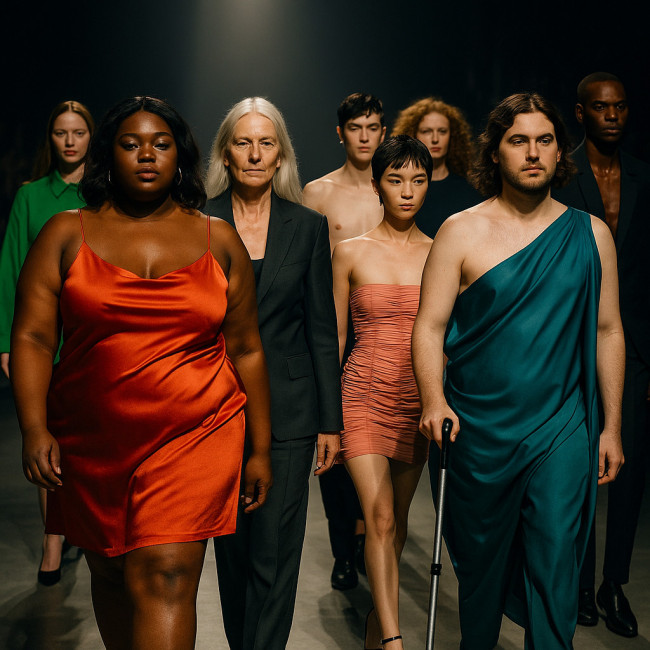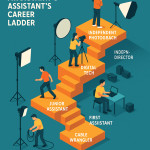Mannequin to model: steps fashion brands follow to cast inclusive runways
Fashion weeks are no longer judged solely on design. Diversity, equity and true representation now shape public perception—and sales. Discover the proven workflow top brands use to turn a mannequin-lineup mindset into an inclusive runway where every shopper feels seen.
Why inclusive runways boost brand value

The inclusive runway conversation moved from social media ideal to concrete business metric. Recent studies show that shows with visibly diverse casts generate 38 % higher earned media value than homogeneous ones. Retail data mirrors the trend: size-inclusive lines report up to 20 % lower return rates, proving that seeing your body type on the catwalk drives confident buying decisions.
From tokenism to transformation
- Representation, not rarity : Audiences now scrutinise whether diversity is spread across the whole show or limited to one “statement” look.
- Authenticity sells : Brand stories that align inclusive casting with inclusive product ranges outperform one-off gestures.
- Legal & ESG pressure : Several markets propose regulation against discriminatory sizing. Proactive casting mitigates future compliance costs.
Step-by-step workflow to build an inclusive cast
1. Start with quantitative body-data, not gut feelings
Design teams feed anonymised customer data—height, measurements, mobility needs—into casting briefs. Tools like diversity checklists translate raw numbers into clear quotas for agencies: e.g., “at least 25 % of models wear size 44+”.
2. Optimise the brief to attract the right profiles
Include detailed garment specs, movement requirements and access arrangements. Templates such as those in casting brief templates reduce mis-casting by 40 % and lower last-minute dropouts.
3. Leverage smart directories for rapid shortlists
Instead of trawling social feeds, buyers use advanced filters—size, skin tone, accessibility notes—inside talent platforms. Guides like shortlisting models online explain how to surface fresh faces in minutes.
4. Conduct bias-aware digital pre-screens
- Disable “beauty” filters on video calls.
- Invite multiple decision makers to scorewalk recordings.
- Use standardised rubrics focusing on walk, fit, and brand alignment—not age or ability stereotypes.
5. Schedule inclusive sizing fittings early
Brands that follow the inclusive sizing playbook allocate extra prototype samples in extended sizes, wheelchair-friendly lengths, or adaptive closures. Early fittings prevent frantic alterations that often sideline non-sample-size talent.
6. Provide equitable on-site support
- Accessible backstage routes and seated rest zones.
- Sign-language interpreters or captioned comms for Deaf talent.
- Hair & make-up pros trained for every texture and skin undertone.
7. Celebrate diversity in storytelling assets
Post-show press releases, lookbooks and e-commerce galleries must spotlight the full range of models, not just front-row favourites. Linking to collaboration-focused platforms such as collaboration-ready artvertisers amplifies visibility across creative industries.
Inclusive casting timeline
| Week | Action | Outcome |
|---|---|---|
| -12 | Define body-data targets & budget | Clear diversity KPIs |
| -10 | Publish bias-free casting brief | Broad applicant pool |
| -8 | Digital pre-screens & shortlist | 50 candidates |
| -6 | First fittings, adaptive tweaks | Garments fit 90 %+ |
| -4 | Confirm cast & backups | No last-minute gaps |
| Show week | Runway, press, social rollout | Earned media surge |
Data snapshot: diversity gains in major fashion weeks
Source : The Fashion Spot Diversity Report
Common pitfalls & how to avoid them
Last-minute exclusions
Problem: Extended sizes arrive late from factory. Solution: Book contingency models with similar measurements and keep sample production parallel to standard sizing.
One-size-fits-all styling
Hair stylists inexperienced with textured hair can cause damage. Invest in training modules or partner with specialists—mirroring advice found in inclusive masculinity roster strategies.
Invisible disabilities
Without confidential health questionnaires, models may quietly drop out. Integrate voluntary disclosure forms and provide medical support early.
Interactive knowledge check
FAQ
- Do inclusive runways cost more?
- Initial prototyping in varied sizes can raise sampling costs by 5-8 %, yet lower returns and higher engagement offset the expense within one season.
- How can small brands access diverse talent quickly?
- Use regional model directories offering geo-filters and transparent day rates. Many platforms support package bookings that streamline fees.
- What if a model requests adaptive changes on show day?
- Keep emergency tailoring kits, adjustable closures and mobility aids backstage. A trained dresser can implement most adjustments in under 10 minutes.
- Is virtual casting an acceptable alternative?
- Yes, provided video quality standards are clear and sample garments ship early for self-taped walk tests.
Key takeaways
- Begin with customer body-data to set measurable inclusion goals.
- Craft bias-free briefs and leverage smart directories for fast, diverse shortlists.
- Budget time for inclusive fittings and backstage accessibility.
- Extend diversity storytelling to post-runway assets to convert visibility into sales.
Ready to elevate your next show? Adopt these steps today and watch brand perception—and revenue—walk tall beside your newly inclusive cast.











